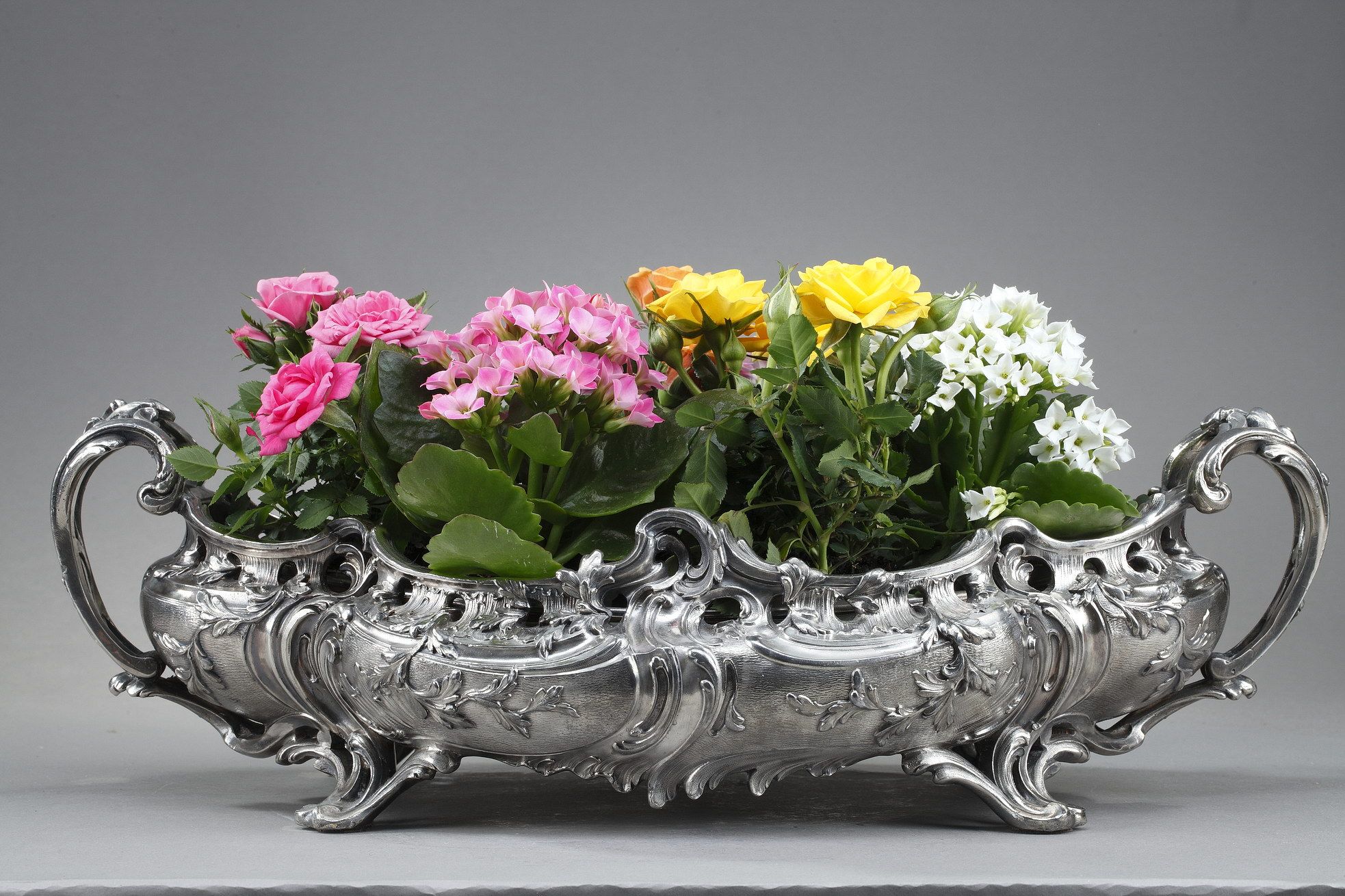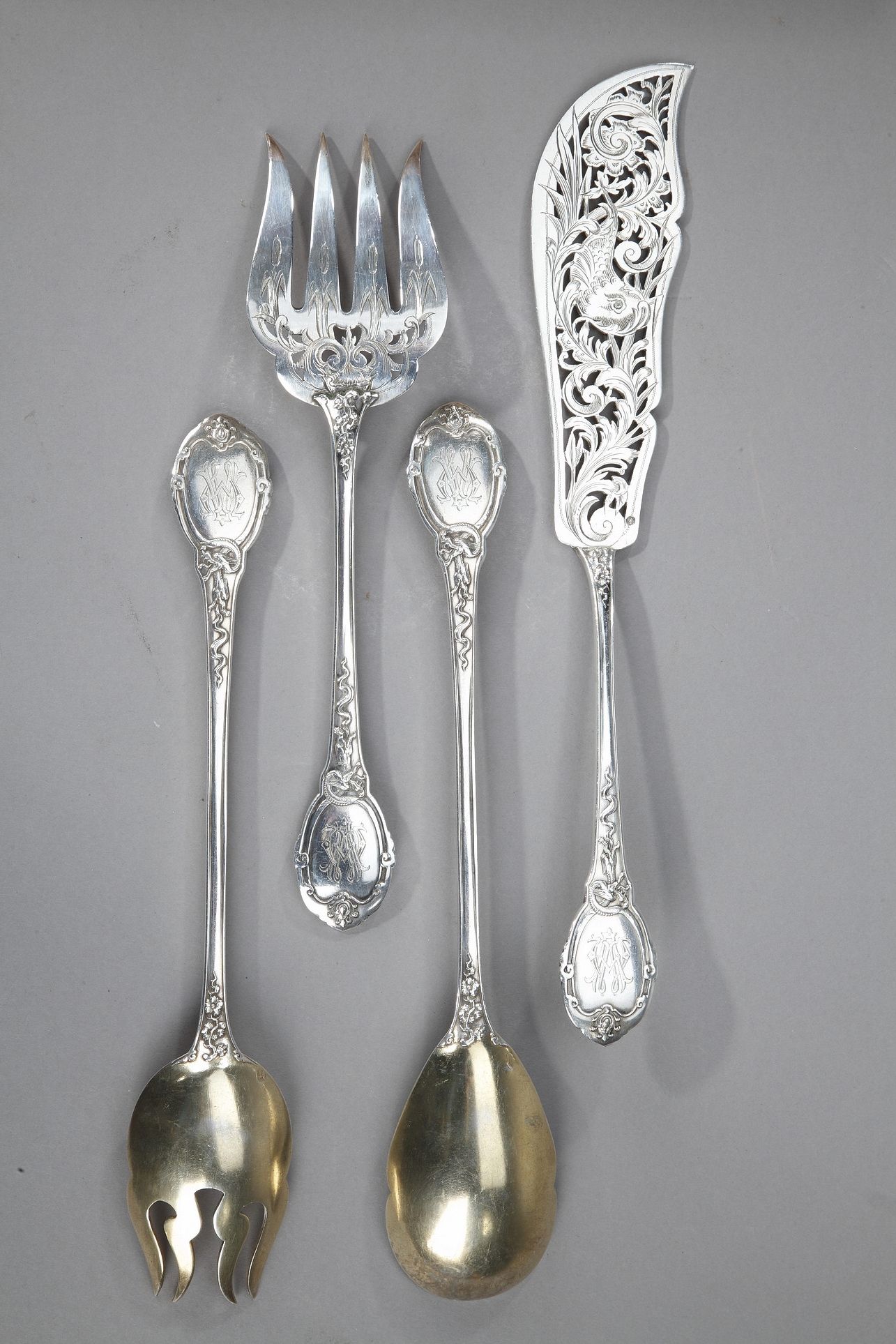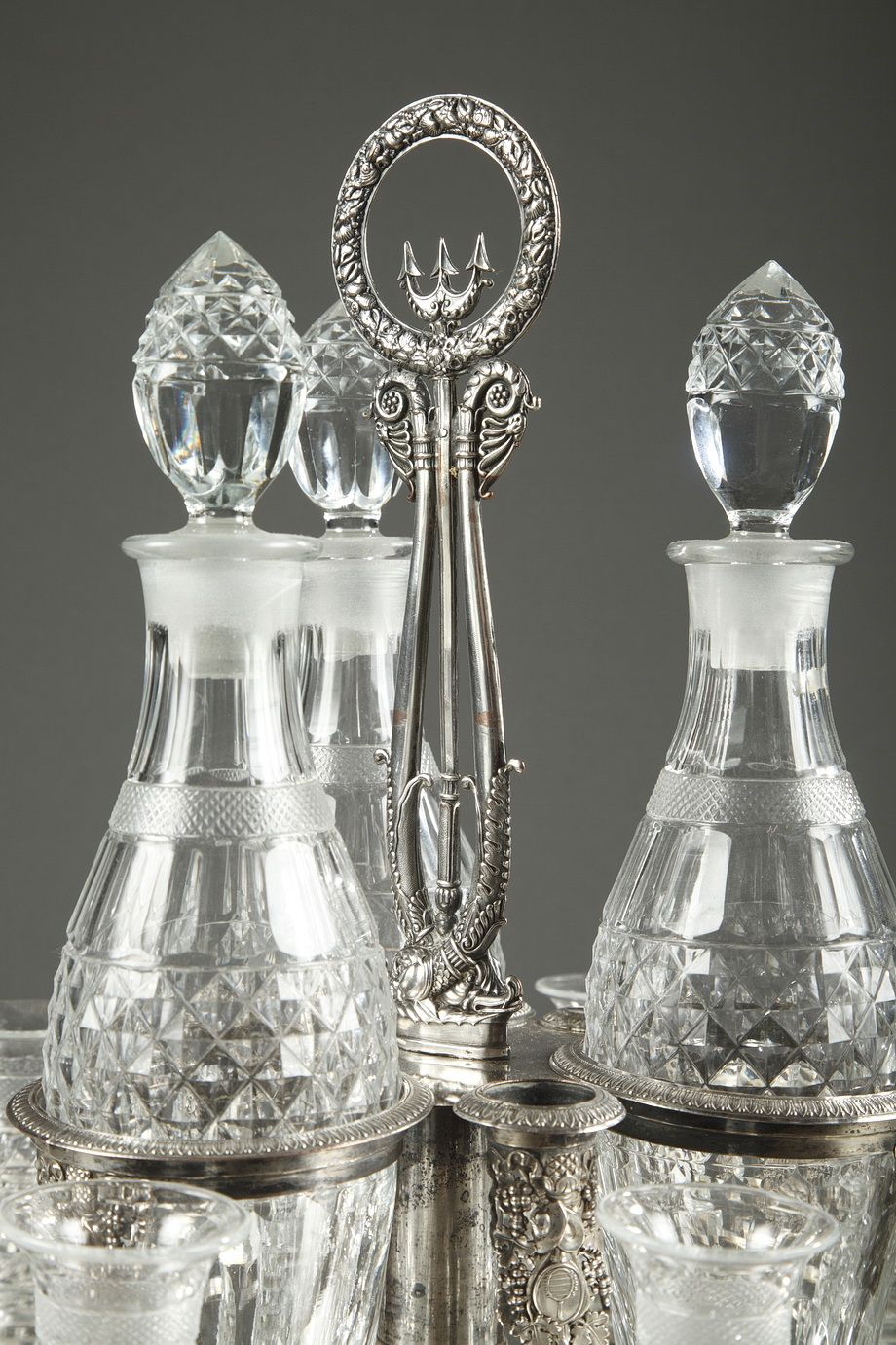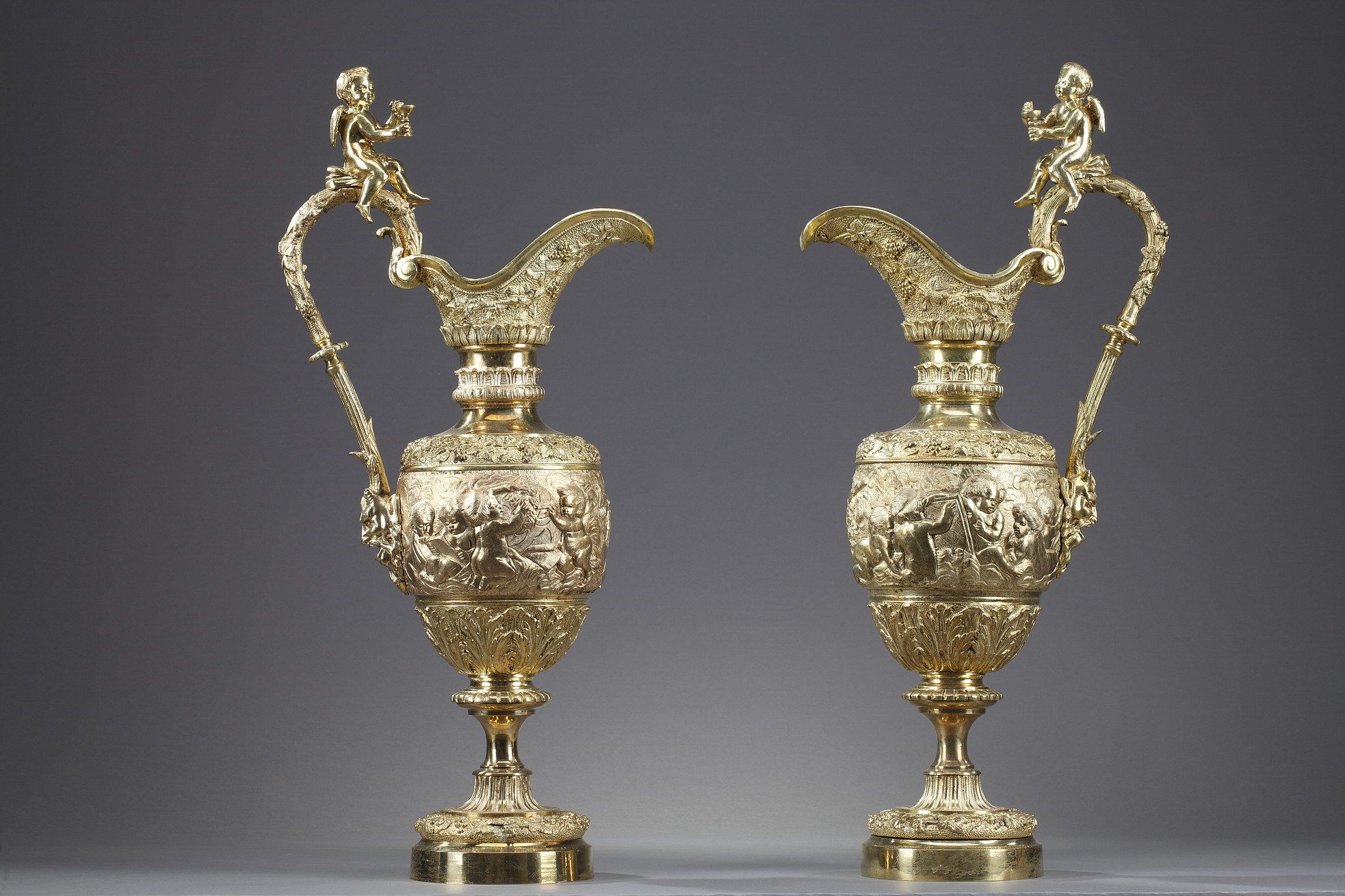From 1820 to 1890, French silversmithing was marked by eclecticism and a taste for a wide variety of styles. From the neoclassical rigor of the Empire to the flights of fancy of the Romantic period and the spectacular naturalism of Art Nouveau, goldsmiths tackled all styles, interpreting, juxtaposing and reinventing them.
Silversmithing techniques
Goldsmithing refers to the working of precious metals, primarily gold and silver (from the Latin auri et faber, meaning "gold craftsman"). However, at a time characterized by the diversification and perfection of reproduction techniques, goldsmithing was not limited to gold and silver objects alone, but also included pieces made of galvanic copper, bronze, damascened iron and, towards the end of the century, pewter.
 Large silver-plated bronze jardinière in the Louis XV style
Large silver-plated bronze jardinière in the Louis XV style
Goldsmiths under the Restoration
With the Restoration, some silversmiths rejected the rigorous style of the Empire, and austere forms became heavier and more ornate. Jean-Baptiste-Claude Odiot, the official silversmith to the court and family of Emperor Napoleon I, produced Louis XV-style pieces to complete a service for the Duc de Penthièvre. At the same time, S.J. Dupezard created an interesting confiturier decorated with pairs of antique figures and twisted horns of plenty.
In the 1820s, the styles of the 17th and 18th centuries were completely rehabilitated. Goldsmiths and manufacturers of "plaqué", the traditional process discovered in 1743 of applying silver leaf to copper, were inspired by the Regency style, seen as a simplified interpretation of the Louis XV style. Bellied pieces and gadrooned shapes known as "melon ribs" were overloaded with foliage. However, during the reign of Charles X, numerous silversmiths produced exceptional pieces combining silver and crystal, cut to an extreme finesse.
Crystal and silver-plated liqueur service, Charles X period
The Romantic era exalted national history, and anything reminiscent of classical antiquity was rejected in favor of styles appreciated as authentically French.
Revived by the vogue for Renaissance works, chasing and repoussé reached unparalleled perfection in the 1830s. Orders became numerous. Famous silversmiths of the period delivered Renaissance-style services in the taste of the 18th century to the great figures of the European courts, such as the Baron de Rothschild and the Duchess Hélèné of Russia. This retrospective game, undoubtedly favored by the Duchesse de Berry, heralded the sumptuous decorations of the second half of the 19th century.
Charles Christofle
In 1844, Charles Christofle developed a new, inexpensive process: electro-chemical silver plating. This involved electrolytically depositing a thin layer of silver, gold or platinum on a piece of copper or any other metal.
 Louis XV style silver-plated bronze centrepiece, Napoleon III period
Louis XV style silver-plated bronze centrepiece, Napoleon III period
Silverware under Napoleon III
The success of electro-chemical silverware led to the decline of plating manufacturers. After 1850, it was common for silversmiths to surround themselves with numerous collaborators, including designers, modellers and enamellers. They also collaborated with renowned sculptors such as Froment-Meurice, Falguière, Chapu, Mathurin-Moreau and Carrier-Belleuse. They adorn Renaissance, Louis XV and Louis XVI goldsmiths with allegorical and mythological figures: loves, centaurs, victories, Olympian gods, tritons and nymphs. These figures are crafted in a wide variety of materials: topaz, porphyry, jasper, enamel, amethyst, ivory and crystal.
Pair of Napoleon III ormolu ewers
Art Nouveau silverware
 Pieces from a flatware in Art Nouveau silver, Henri Soufflot
Pieces from a flatware in Art Nouveau silver, Henri Soufflot
Towards the end of the century, faced with this decorative abundance devouring surfaces, people felt the need to turn to nature. Falize, then Christofle, Vever and Cardeihhac decorated silver or metal pieces with naturalistic vegetation treated with complete freedom. Cabbage leaves and celery stalks gradually replaced scrolls and rocaille, and on lids, reapers, sowers and farm animals replaced allegorical figures.
Bibliography
ARMINJON, Catherine, L'orfèvrerie au XIX° siècle, proceedings of the international symposium Galeries nationales du Grand Palais, Dec. 12-13, 1991, Paris, La Documentation française, 1994.
GRANDJEAN, Serge, L'orfèvrerie du XIX° siècle en Europe, Paris, Presses universitaires de France, 1962.
KJELLBERG, Pierre, "L'argenterie française du 19e siècle 1830-1890", Connaissance des arts, no. 296, October 1976, pp. 59-67.




